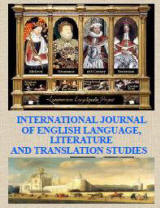Physical Theatre: Examining
Techniques and Impact on Modern Drama
Abdulhadi Dhiaa Mahdi1
& Yousif Ali Yousif2
1,2Department of English, College
of Education for Humanities, University of Diyala, 32001,
Diyala, Iraq
Corresponding email: abdulhadi.en.hum@uodiyala.edu.iq1;
yousuf.en.hum@uodiyala.edu.iq2.
ABSTRACT
Physical theatre represents a vibrant and eclectic
form of theatrical performance that emphasizes the use of the human
body as the primary expressive medium. Unlike traditional drama,
which often relies heavily on dialogue and narrative, physical
theatre focuses on movement, mime, dance, and visual storytelling to
convey meaning. This genre has its roots in various theatrical
traditions and has been significantly influenced by practitioners
like Jacques Lecoq. Physical theatre transcends linguistic barriers
and engages audiences on a visceral level, making it relevant in our
increasingly globalized society. It offers a powerful medium for
exploring complex themes such as identity, emotion, and human
relationships through the language of gesture and movement.
Furthermore, physical theatre has contributed to the evolution of
modern drama by introducing innovative methods of storytelling and
audience engagement, broadening the scope of theatrical expression
and reflecting contemporary cultural trends towards hybridity and
innovation in the arts.
Keywords: Physical, Theatre, linguistic, cultural, gesture,
transcends.




